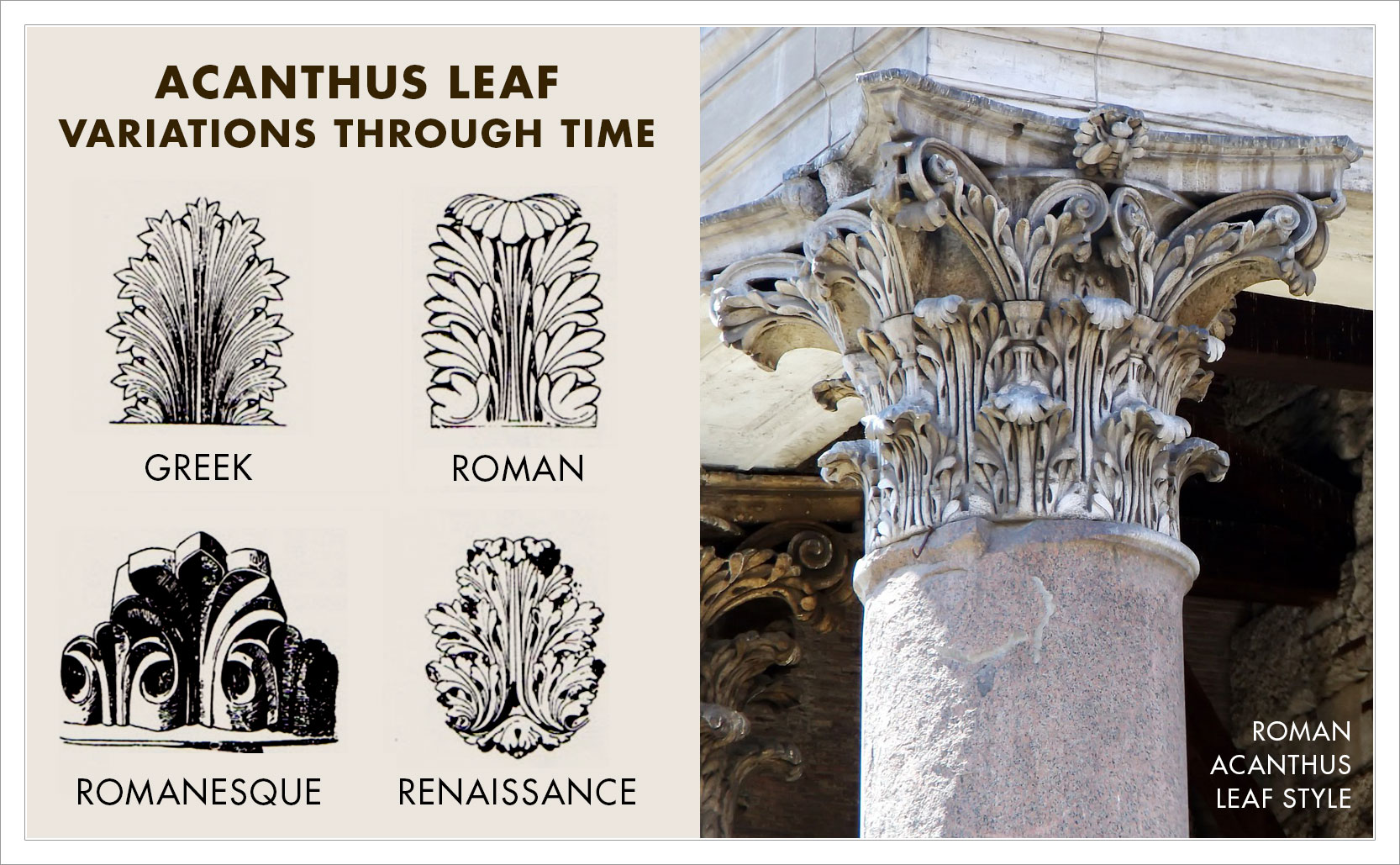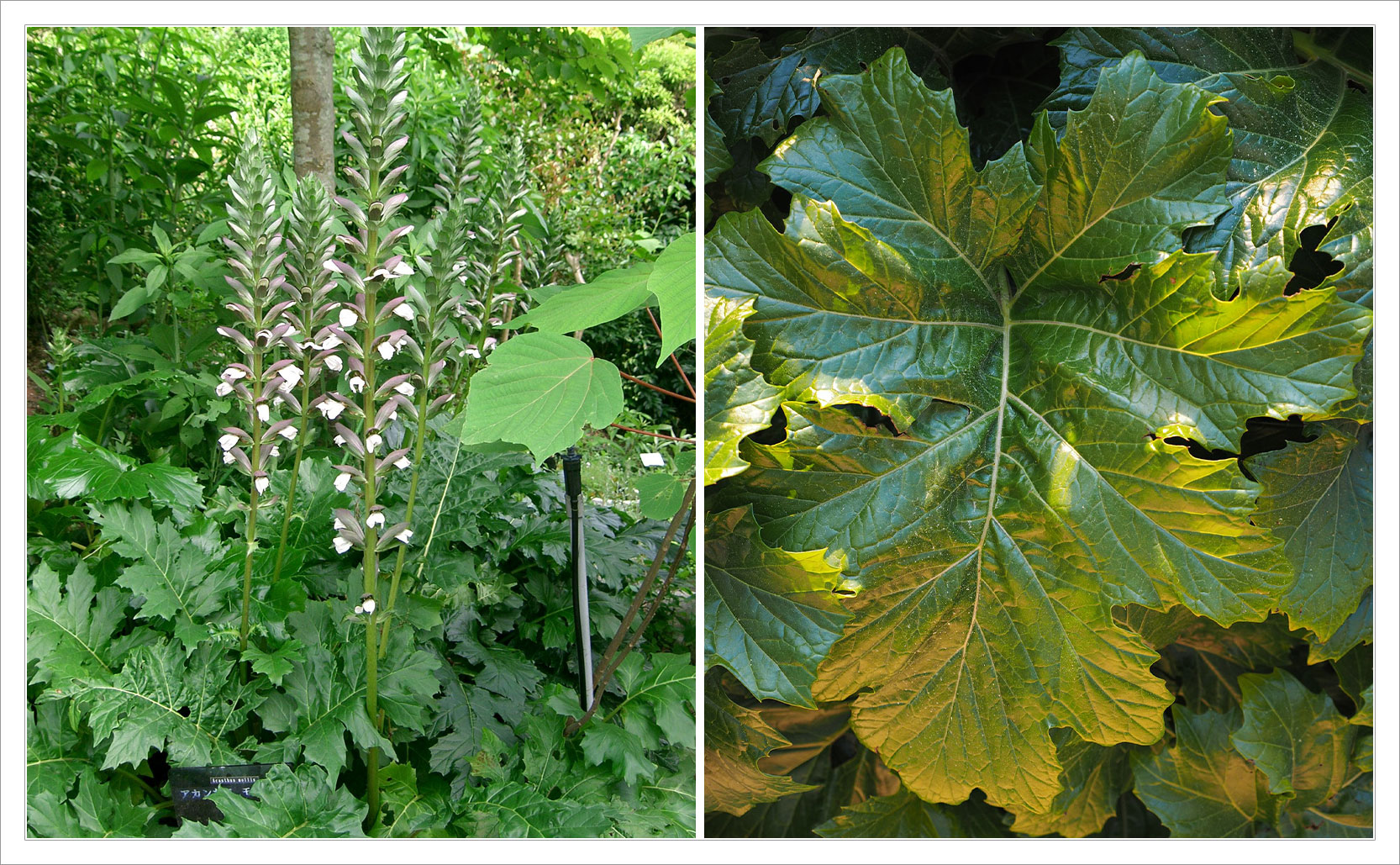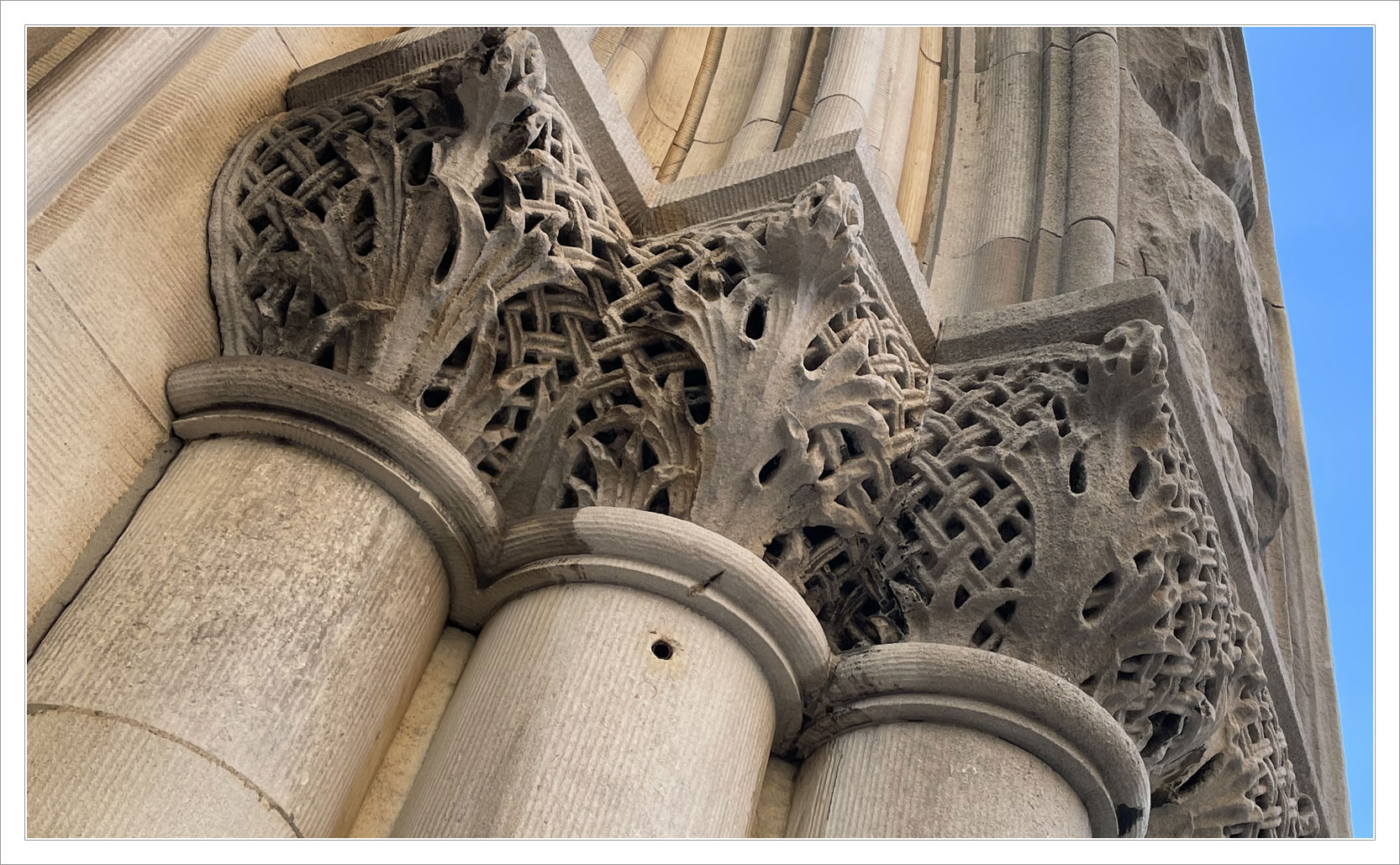Acanthus: the plant you’ve seen in art more than you’ve seen in real life.
At the top of a Corinthian column (the kind of column found at the Pantheon, the US Capitol Building, a classical bank near you, or pretty much any Greek-inspired building that wants to be taken seriously) you will find carved acanthus leaves. Corinthian column capitals have been ornately carved with the leaves of the acanthus plant since at least 450–420 BCE but the style became popular after the Romans borrowed it (as the Romans borrowed many things from the Greeks).

The acanthus plant, and specifically the Acanthus mollis, is an invasive perennial plant that grows around the Mediterranean. Its big toothy leaves can grow to be 20 inches long and when it flowers the stalk can be taller than a person. Historically its big leaves were used to wrap and store food. The salt in the plant helped draw air out of food serving as a preservative. The acanthus was used medicinally for joint pain and burns, and for reasons that aren’t completely certain it is also called “bear’s breeches.”

As the story goes, the Greek sculptor Callimachus supposedly saw a basket left on the grave of a little girl and acanthus leaves had grow around and weaved their way through the basket. Moved by this he used it as inspiration when he carved the first Corinthian column capital. The curved jagged edges of the leaves work well visually both up-close and far away (such as at the tops of columns).

Over the following millennia the acanthus leaf motif migrated its way around art. It’s everywhere. You find it in the 19th century Arts & Crafts patterns of William Morris, it’s in arabesque patterns, it’s in carpets, furniture, wall sconces, lamps, churches, jewelry, clocks, funerary urns, etc. The acanthus is one of, if not the, most artistically represented plants in the world.






